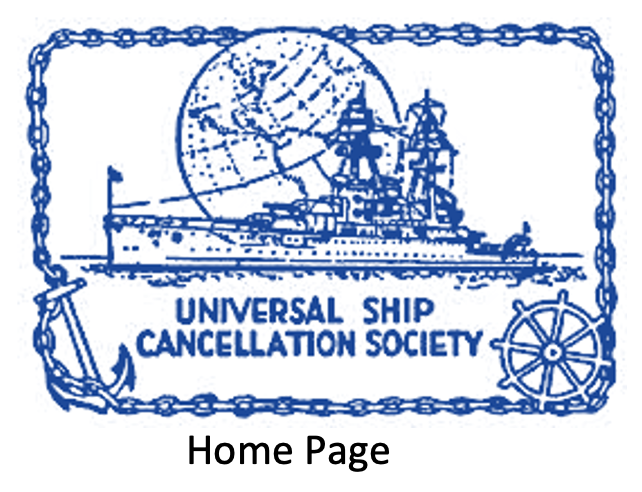Originally, a “navy cover” was just a letter from a sailor, or even a postcard, with the postmark from the ship’s post office (Navy ships have had their own post offices since 1908). By the 1930’s collectors began sending their own envelopes, or “covers”, to ships for examples of these postmarks. Many have been decorated with designs called cachets, some of which are true works of art. Although early postmarks may be scarce, many are very modestly priced and large collections can easily be formed without spending a lot of money.
Many United States Navy ships have post offices aboard ship. (Not all ships have a post office. Submarines do not currently have a post office and most smaller ships do not either.) Sending for a cover is as simple as sending a stamped envelope and request to the ship. As ships change home ports, they may also change their addresses. The US Navy maintains a list of ships and their mailing addresses on a web site although it may not always be completely up to date.
Many collectors send covers for postmarks that mark an important event in the life of a ship or perhaps that mark an anniversary of ship. The United States Postal Service often approves special postmarks for these occasions.
Naval cover collectors have always found many different ways to collect covers. Whether it the interest is in cachets or postmarks, there are many ways to create specialized collecting topics. Topics allow a collector to manage the collection and keeping the “challenge” of collecting fresh. It is easy to focus on additional or new topics that will also keep the joy of collecting fresh. Whether the focus is on ship type, ship name, cachets or postmarks, there is much to offer a naval cover collector.
